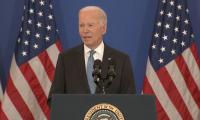There has been an incessant focus on attracting foreign investment in the country, through half-baked pitches to a few friendly countries. Despite such a focus, and activity at the highest echelons, the actual flow of capital into the country has been dismal at best. Expecting investments to magically flow because a few sovereign leaders talked to one another is not a great strategy for sustainably attracting investments.
Capital flows to the jurisdiction with the highest risk-adjusted return, and from where it can be easily repatriated. Capital flows are also contagious, and it only flows in areas where capital is already being mobilized. In the case of Pakistan, domestic capital mobilization or investments have been dismal at best. The investment-to-GDP ratio in the country hovers in the range of 13 per cent, which remains considerably lower than the average investment-to-GDP ratio of 30 per cent for South Asia, or for other middle-income economies. Effectively, we do not save enough, such that we can invest the same.
Although households do save in the country, those savings are largely in cash, gold, or in real estate – all three areas which do not contribute to any productive growth of capital that can yield export-oriented output. Such dearth of capital in the system is a consequence of a banking system that exists to only serve needs of the sovereign, which is the largest borrower, as well as the largest depositor in the system. Such a structure effectively ensures that whatever capital is available in the formal economy, the same is mopped up by the sovereign to bridge its fiscal deficits.
In such a scenario, not enough capital is available such that domestic capital can be mobilized for any serious investments in industrial, or export-oriented capacity. Moreover, creation of a structure where the informal economy is incentivized, while the formal economy is penalized, further erodes any serious efforts in mobilizing domestic capital for domestic investments. In such a scenario, where domestic capital is discouraged, it makes not sense for any foreign investor to deploy capital in the country.
Pakistan’s sovereign risk can be deemed as very high, and any serious capital allocator takes such risk into consideration. Moreover, corporate tax rates, super tax, and other arbitrary taxes make the effective tax rate for corporations in Pakistan to be one of the highest in the emerging and developing markets. Many OECD economies have effective corporate tax rates that are lower than Pakistan. In a scenario where the sovereign risk is high, and corporate tax rates are among the highest in developing or emerging markets, there is little incentive for any domestic or foreign investor to actually deploy capital in Pakistan.
Reviewing investment data for middle income and upper middle-income economies clearly demonstrates that domestic investments need to increase first, before these are followed by a growth in foreign investments. A foreign investor needs to assess the experience of a domestic investor first, before they can partner with them or invest in the local ecosystem.
Prioritizing foreign investments without having necessary groundwork in place is akin to putting the cart before the horse. The cart here being domestic investments. Even the website of the apex investment body continues to promote real estate as an attractive investment opportunity – when that should be the last one, following investments in agriculture or industrial oriented growth.
The economy needs to be retooled. Foreign Direct Investment makes less than 0.5 per cent of GDP, much lower than the region or other similar sized economies. This has a direct correlation with the overall investment in the economy, which has remained dismal. It is simply not possible to prop up foreign investment, without enabling a thriving environment for domestic investments, and this cannot be done if the government continues to incentivize real estate and other informal trading activities.
The country needs more jobs, and it needs higher productivity. Those jobs can only be generated through mechanization of agriculture, and through revitalizing the industrial base. The revitalization can only happen if we incentivize mobilization of local capital, and that can be done through reducing the size of the informal economy, reducing tax rates for operating in the formal economy, and more importantly creating a fair competitive environment which incentivizes the formal economy. It makes no economic sense to invest in a market, where an entity selling goods formally has to bear a higher sales tax, while an entity operating informally does not have to pay any sales tax. We need to make commercial and industrial activity easier for formal businesses, rather than the other way around.
As a competitive environment is created, this will attract more domestic investment, which would eventually crowd in foreign investment. The obsession to attract foreign capital without creating an enabling environment for domestic capital is not sustainable, and can never generate a sustainable flow of capital.
The country needs more investment in enhancing its productivity. Over the last few years, sufficient investment has been done in infrastructure development – we now need to enhance productivity, and maximize export-oriented output. Economic growth is the only way out of this quagmire, and that cannot be done by alienating domestic capital and incentivizing informal and untaxed segments of the economy. The economy needs to be restructured, the will to do it does not seem to exist.
The writer is an assistant professor of practice at the School of Business Studies, IBA, Karachi.
Since 2020, smoking rates in EU have decreased by only 1%, as revealed by Special Eurobarometer 539
Battle between good and bad actors increasingly hinges on creativity and technological prowess
Some of this contemporary music is profoundly moving, with exceptional compositions produced in state-of-the-art studios
Marxist historians interpreted history through concepts of class struggle and materialism
Welcome to G-zero world a chaotic free-for-all where global leadership is absent
Export diversification and integration within global value chains remain a major challenge







